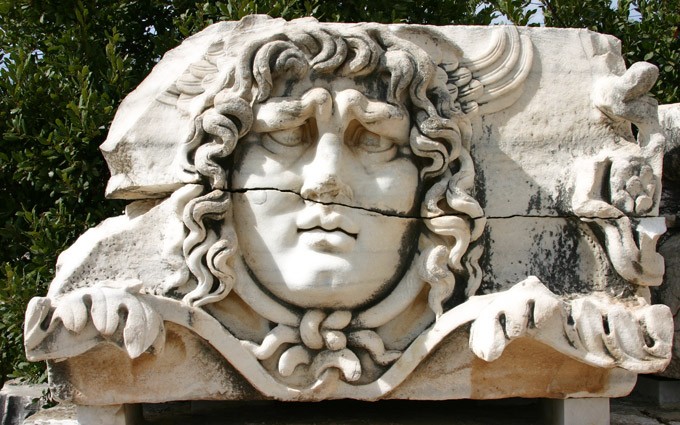
Didyma (Didim), located an hour’s drive from the city of Aydin city, is a fascinating destination with a rich cultural heritage and a stunning coastline. Its golden beaches and intricate coves are a wonder of nature and provide ample opportunities for swimming and boat trips. However, what sets Didyma apart from other summer resorts is its historical significance. The Temple of Apollo, located in Didyma, is one of the largest and best-preserved temples of the ancient world. Built in the 8th century BC, it was dedicated to the god Apollo and was a place of great importance for religious pilgrimages.
In addition to the temple, Didyma is also home to other ancient cities, including the well-preserved ruins of Miletus and Priene, which offer insight into the region’s rich history. Moreover, the city has attracted a large number of expatriates, particularly the British, who have settled in Didyma and created a vibrant community. As a result, the city is full of bustling international activities, including shopping centers, markets, and supermarkets, which provide a unique blend of cultural experiences.
While summer is undoubtedly a popular time to visit Didyma, the city’s charm extends beyond the season. The vibrant life of Didyma continues throughout the year, and visitors can enjoy its historical and cultural attractions and bustling expat community. Overall, Didyma is a unique and fascinating destination that combines history, natural beauty, and modern conveniences.
TEMPLE OF APOLLO
The Temple of Apollo in Didyma, also known as Didymaion, was one of the most significant religious sites in the ancient world. It was located in the city of Didyma, which was considered to be one of the most important oracles of the Hellenic world, second only to Delphi. The temple was dedicated to the god Apollo, who was believed to be the god of prophecy, healing, and the arts.
The construction of the temple began in the 8th century BC, but it was destroyed and rebuilt several times over the centuries. The temple was designed to be one of the largest and most magnificent structures of the ancient world, with 120 columns arranged in two rows of 10 on the front and back and six rows of 15 columns on the sides. The columns, which were over 19 meters high, were decorated with intricate reliefs and carvings, and the temple was topped with a massive roof that was supported by ionic columns.
Visitors to the temple would enter through a large propylaeum, or gateway, and then pass through a series of chambers before arriving at the main sanctuary. At the center of the sanctuary was a large open-air courtyard, where the oracles of Apollo would deliver their prophecies. The temple was also home to a large statue of Apollo, which was believed to be the largest statue in the ancient world at the time.
The temple was destroyed by the Persians in the 5th century BC, but it was rebuilt on an even grander scale by Alexander the Great and his successors in the 4th century BC. The rebuilding project was never fully completed, and the temple remained unfinished for centuries. Despite this, the temple continued to attract pilgrims from all over the ancient world, and it remained an important site of religious pilgrimage until it was finally destroyed by the Goths in the 3rd century AD.
Today, visitors to Didyma can explore the ruins of the Temple of Apollo, which is still one of the largest and most impressive ancient structures in Turkey. While much of the temple is in ruins, visitors can still see the massive columns, the intricate carvings, and the remains of the main sanctuary. The site also includes a museum, which houses artifacts and displays that provide insight into the temple’s history and significance.
